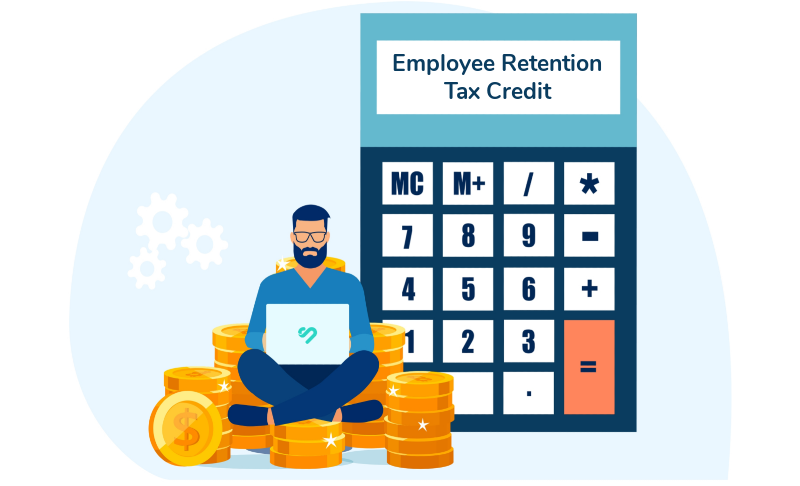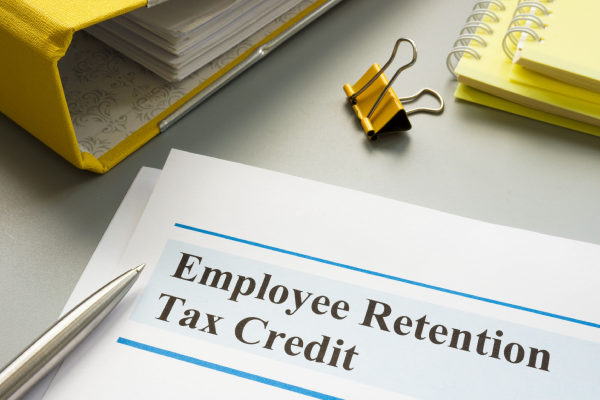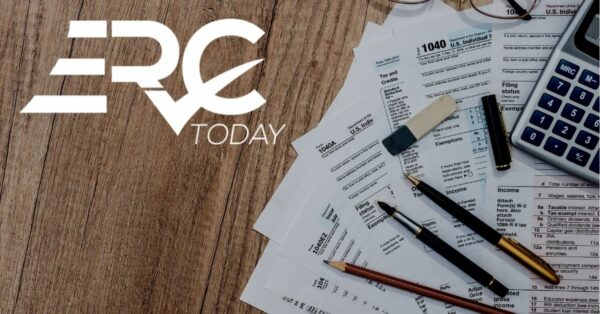Do you want to know what the Employee Retention Credit is all about, see if you actually qualify for it, and estimate how much your business may receive?
This resource is a masterclass on the ERC and will get you up to speed, fast.
Choose Your Own Adventure to Discover The ERC…
1) 🧾 What is the Employee Retention Credit (ERC) 2024 and How Does It Really Work?
2) 🧳 How do I know if my business qualifies?
3) 💰 How much may I be eligible to receive?
4) 📅 How long will it take to get my checks from the IRS?
5) 🏧 How do I get my ERC funds paid upfront instead of waiting on the IRS?
6) 🔍 Which ERC Processor should I work with?
7) 📨 How do I file for the ERC?
8) 🙋🏻♂️ Frequently Asked Questions about the ERTC?
What is the Employee Retention Tax Credit and How Does It Really Work?
When properly claimed, the ERC is a refundable tax credit.
It was designed for businesses that continued paying employees while shut down due to the COVID-19 pandemic or that had a significant decline in gross receipts during the eligibility periods (2020 and the 1st three quarters of 2021).
The credit is not available to individuals.
Because it’s a refundable tax credit, you don’t have to pay it back. It was signed into law by our President in March of 2020 as part of the massive $2.2T CARES Act.
Watch this short video to see if your business may qualify for the ERC:
(Video: The Employee Retention Credit explained and how to know if your business qualifies)
If you had less than 100 W-2 employees on payroll in 2020-2021 or less than 500 W2 employees in 2021 AND you experienced a revenue decline (defined below) OR a partial or full shutdown due to government orders (defined below), you may qualify for the ERC.
👉 YES, you may qualify for up to $26,000 per employee you kept employed in 2020 and 2021, but the average in the industry is closer to $12,500/employee.
👉 YES, it’s a government tax refund you don’t have to pay back, but you still have to pay income tax on the proceeds you get (Yes, it’s treated as income 😭).
👉 YES, it’s essentially a “COVID stimulus” program designed to get funds in the hands of businesses that qualify.
👉 YES, it’s been a lifeline for millions of businesses so they can stay open, pay payroll, cover operating expenses, invest in their business, and pay off debt.
👉 YES, you may qualify for the ERC even if you took a PPP loan, but you can’t double dip and claim both on the same wages.
👉 YES, there are some bad actors out there, posing as qualified business owners, making fraudulent claims to the IRS (most of them will get busted, not worth it).
👉 YES, there are some bad ERC processor firms out there who are making fraudulent claims on behalf of their “clients” (again, most will get busted, not worth it).
👉 YES, it’s taking the IRS 6-12 months to process ERC checks.
👉 YES, there are simple ways to sell your ERC asset so you get paid upfront and don’t have to wait 6-12 months for the IRS. (See below)
👉 YES, you are ultimately responsible for the accuracy of the information on your tax return. Do not let an ERC Processor coax you into “qualifying” when you don’t. Only file for the ERC if you qualify. (See below for ERC eligibility requirements)
“Only 8% of owners used ERTC in 2020 and 10% in 2021.” — ERC Today
❌ NO, the ERC is not a scam. The U.S. Government has hundreds of billions set aside for this program.
❌ NO, not every business qualifies. I’ll cover qualification requirements below.
❌ NO, the ERC program is different than PPP. The Paycheck Protection Program was designed to be, for the most part, a forgivable loan. The ERC is a payroll tax refund, not a loan.
❌ NO, you can’t qualify if you’re a 1099 contractor or solopreneur (must have paid W-2 pages in 2020 and/or 2021)
❌ NO, not every ERC Processor is the same. (See below, what to look for in a great ERC Processor)
❌ NO, you shouldn’t pay a 30% fee to get your ERC processed and filed. The industry average right now is 15-25%, depending on who you go with and what level of service you need.
❌ NO, you shouldn’t be scared to file for the ERC if your business actually qualifies for the ERC. If you qualify, you are exactly who the program was designed for.
Tip: Take this 60 second quiz to see if you prequalify for the ERTC today!
The Eligibility Test: Does My Business Qualify for The ERC?
The IRS rules about the ERC are complex. Let’s boil it down and keep it super simple here…
To see if your business qualifies for the ERC, ask yourself the following high-level questions:
1) Did I have 1-100 full-time W-2 employees on payroll during 2020-2021 OR 1-500 full-time W-2 employees in 2021, NOT including majority owners or relatives?
2) Did I experience a 50% revenue decline in 2020 as compared to the same calendar quarter in 2019 OR did I experience a 20% revenue decline in 2021 as compared to the same calendar quarter in 2019?
3) Did I experience a partial or full government shutdown that more than nominally affected my business operations? Is there an appropriate governmental order that I can reference to back up this claim? Did I experience any of the following as a result of these government mandates?:
-
- Change in business hours
- Partial suspension of operations
- Change in business model
- Supply chain disruptions
- Reduction in services offered
- Restricted travel to job sites
- Social distancing requirements
If you answered “yes” to #1 above AND yes to either #2 or #3, then it’s probably worth 45 seconds of your time to see if your business prequalifies.
How Much Can I Get?
The IRS states you can get up to $5,000 per employee for all of 2020, and up to $7,000 per employee per quarter in Q1, Q2, and Q3 of 2021. Add that all up and it equals $26,000 per employee.
But that’s not what most businesses are actually qualifying for. The average award per employee is hovering around $12,500.
So if you have 20 employees, and you get the average award, you’d get about $250,000.
The average ERC award per business is about $165,000. That means the average number of employees being filed is around 13.
Give or take! These are not exact numbers, they are directional. Do your own research.
You can see if you prequalify here.
Here are some ranges of awards the IRS is granting qualified businesses:
How Long Will It Take To Get My ERC Funds?
Most businesses are experiencing a 6-12 month wait time.
There are of course edge cases where businesses have received their funds sooner than 3 months, and some after 12 months. Yes, it’s a large range but the IRS has A LOT of returns to process.
A recent article in the Experian blog states the IRS was backlogged by 446,000 returns in January 2022 to a low of 199,000 in September 2022. As of March 2024, there are over 500,000 unprocessed returns.
The bigger ERC awards ($250k+) are generally taking longer to process than the smaller ones.

Source: Experian
How to Get Your ERC Funds Paid Upfront Instead of Waiting for the IRS (“The ERC Advance”)
If waiting around isn’t your thing, you may want to consider getting an ERC Advance. This is where you sell your ERC asset to a bank or financial institution and receive your funds quickly, without waiting for the IRS to mail your checks.
They collect all the necessary paperwork and then underwriting takes about 7 days after you’ve submitted all the necessary documentation.
Then they send you your ERC funds minus the fees they charge.
Fees can range from 11% to 30%+ depending on the quality of your file and the “riskiness” of your file as deemed by the financial institution.
To see if you prequalify for an ERC Advance, go here. Note: you won’t qualify for an ERC Advance unless you’ve already filed your 941-Xs (amended tax returns) for the ERC quarters you’re claiming.
Which ERC Processor Should I Work With?
One of the most important questions in this resource!
WHO you choose to be your ERC Processor is of utmost importance.
There’s a full-blown cottage industry of ERC firms that have popped up over the past 12 months.
Some are great, some are questionable.
The questionable ones?
👉 They don’t have a well-defined onboarding and document collection process, which means a more painful experience for you
👉 They don’t prepare thorough, high-quality files that actually show why and how your business qualifies for the ERC, including the calculations and governmental orders being referenced (if you’re claiming based on partial or full shutdown)
👉 They charge egregious, usurious rates (some over 30% of your total ERC award!)
👉 They don’t provide you with a comprehensive, thorough report on your ERC claim
👉 They don’t offer support if you ever get audited by the IRS
Here’s what to look for in a great ERC Processor
1) Do they run your business down two eligibility paths to see if you qualify?
- The “revenue decline” path is black and white…it’s a calculation
- The “partial or full shutdown” path is not black and white and requires additional analysis and interpretation
2) Do they give you a comprehensive report that shows:
- HOW your business qualifies for the ERC
- The payroll CALCULATIONS that justify your ERC amount
- If you’re qualifying based on “partial or full shutdown,” the report references which governmental orders are tied to the ERC claim
- And yes, they should ask you some detailed questions about your eligibility if you’re not filing based on the black-and-white revenue decline calculation.
3) They should have processed over 1000 ERC claims by now
- Don’t go with a small shop. The processors who are doing higher volume have a meticulously-designed process now that results in higher quality analysis, faster processing time, and a better experience for you. Your stuff gets submitted to the IRS faster, thus you get your funds faster.
- But remember, not all processors, even high-volume ones, produce strong files. There’s only a small number of high-volume processors that produce strong files.
4) They should only charge a 15-25% contingency (success) fee
- Larger files are closer to 15%
- Smaller files are closer to 25%
See if Your Business Prequalifies (How to File and How Much You Can Get)
Congrats, you’ve made it this far! By now, you should be well-informed about:
👉 What is the ERC and how does it actually work?
👉 How do I qualify for the ERC?
👉 How much can I get?
👉 How long will it take to get my funds?
👉 Which ERC processor is the best one to work with?
You now sit among the top 1% of all business owners in terms of your ERC knowledge and how to know if you qualify.
So, after reading this, the question is, do you think your business may qualify for the ERC?
If so, your next step is to see if you prequalify and how much you can get.
It’s a 3 question quiz that takes about 45 seconds.
If you prequalify, you’ll have the option of scheduling a brief, no-obligation consultation call with an ERC Expert at one of America’s best-in-class ERC Processors.
Important Questions To Learn More About The Employee Retention Tax Credit
How does employee retention credit work?
➤ The Employee Retention Credit is a refundable tax credit available to certain businesses that qualify. Based on certain factors such as employee cap and qualified wages, specific business owners are entitled to a percentage of qualified wages an employer pays to employees after March 12, 2020, and prior to January 1, 2021.
Who qualifies for the employee retention credit?
➤ To qualify and be an eligible employer you must be able to prove that your business was negatively impacted in one or more of the following ways: Your business experienced a partial or total shutdown during 2020 or 2021 (includes being limited by commerce, inability to travel, or restricted group meetings), or gross receipt reduction (a business may be eligible for one quarter and not another).
How to apply for employee retention credit?
➤ To apply for the Employee Retention Tax Credit, employers must complete and file Form 941-X, Adjusted Employer’s Quarterly Federal Tax Return or Claim for Refund, with their quarterly federal tax return. For more information on how to apply for employee retention credit, we recommend talking to ERC Assistant to see if you qualify. You can also take this 60-second quiz to start the ERC application process today.
What is the deadline for employee retention credit?
➤ The Employee Retention Credit sunset date was moved from 12/31/21 to 9/30/2021; however, you can still file retroactively as long as you meet the eligibility requirements.
Is the employee retention credit taxable income?
➤ The ERC is not considered taxable income for employees. This means that employees will not have to pay any additional taxes on wages that are covered by the ERC. For employers, the ERC is treated as a Business Expense, which can be used to offset taxes owed. The ERC is a valuable tax relief measure for employers and employees alike, and it can help to retain key personnel during these difficult times.
Can I claim employee retention credit and PPP?
➤ In short, yes. Initially, if you took the PPP loan, you couldn’t claim the ERTC. However, the Consolidated Appropriations Act (CAA) passed in December 2020 rectified that, enabling smaller businesses to seize both opportunities as long as they met the eligibility requirements and followed the rules. It’s important to note that businesses cannot claim a payroll expense as both an ERTC wage and a forgivable payroll cost on the PPP forgiveness application.
What can I spend the employee retention credit on?
➤ The Employee Retention Credit is essentially like a reimbursement, which means you can’t spend the money on whatever you might like. However, it’s considered a fully refundable tax credit, so you’re getting up to 50% of $10,000 in wages per quarter for each employee if you are eligible and were adversely affected by the pandemic.
Can I still claim the employee retention credit?
➤ A recovery startup business can still claim the ERC for wages paid following June 30, 2021, and prior to January 1, 2022. You can also claim the ERC for prior quarters by filling the applicable adjusted employment tax return within the appropriate deadlines.
What are qualified wages for the employee retention credit?
➤ Qualified wages are any wages paid by an eligible employer to an employee after March 12, 2020, and before January 1, 2021. For businesses that have experienced a significant decline in gross receipts or any shutdown due to COVID-19, all wages paid to employees are considered qualified wages. The ERC is a refund in the form of a grant and can return up to $26,000 per employee ($11,000 is the average) depending on wages, health care, and other personnel expenses business owners have already paid. The ERTC is available to all businesses, regardless of size or industry.
Do I have to pay back the employee retention credit?
➤ No. The ERTC is treated as a reimbursement in the form of employer credits, so it’s as if it’s money the government owes you — like you’re being rewarded for making it through these last several years as a business. It is called a loan, but you never have to pay it back.
How much is the ERC credit in 2024?
➤ ERC is a refund in the form of a grant and can return up to $26,000 per employee ($11,000 is the average) depending on wages, health care expenses, and other personnel costs business owners have already paid through the qualifying period.
When does the employee retention credit end?
➤ The ERTC can be claimed for wages paid after March 12, 2020 and before January 1, 2021 (these dates can and do change, resulting in qualification changes as well). To be eligible, employers must have experienced a full or partial shutdown due to a COVID-19-related mandate, or must have experienced a significant decrease in gross receipts.
How long does it take to get an employee retention credit refund?
➤ According to the most recent information from the IRS, forms that have already been filed should expect to result in a reimbursement somewhere between 6-10 months from the date of filing. For businesses that qualify for the ERTC but may want to receive their reward sooner than six months to one year, may be eligible for a business loan as a form of an ERC advanced payment. This loan is then repaid back once the IRS has successfully confirmed the reward and disbursed funds.
Top 3 Best Employee Retention Credit Services
1) ERC Specialists
ERC Specialists is an employee retention credit service that offers a streamlined process for onboarding clients and filing claims in as little as 1-2 weeks. They have a secure Client Portal protecting sensitive information to protect you from ERC fraud or other malicious parties. You can get an initial ERC estimate at no cost, with minimal time invested on the front end.
Lastly, the ERC Specialists team can deliver ready-to-file documents for the IRS without involving your payroll company. That way you are protected in case you are subject to an ERC audit or IRS investigation.
Why this service makes it easy to file your employee retention tax credit: ERC Specialists analyzes whether or not your business qualifies for the ERC Program, what amount you should receive, and any additional technical details that might arise in this otherwise complex process. With the experts at ERC Assistant by your side, you don’t have to worry about navigating it by yourself. They will guide you and outline the steps it will take for you to maximize the claim for your business answering any ERC questions you may have.
Where to learn more: ERC Specialists
2) ERC Today
ERC Today is an employee retention credit service that helps companies evaluate their eligibility, completes a comprehensive analysis of their claim, offers guidance on the claiming process and documentation, gives specific program expertise that a regular CPA or payroll processor might not be well-versed in, and executes a fast and smooth end-to-end process, from eligibility to claiming and receiving refunds.
ERC Today assesses how the PPP loan will factor into your ERC, what the differences between the 2020 and 2021 programs are and how it applies to your business, as well as what the aggregation rules are for larger, multi-state employers and you should interpret multiple states’ executive orders.
Why this service makes it easy to file your employee retention tax credit: With effortless data gathering (including a portal for you to upload your 941 returns, PPP loan documents, and raw payroll data), credit calculation to determine the exact value of the credit you are eligible to receive from the IRS, and help amending returns, ERC Today can walk you through the process from beginning to end. ERC Today has benefited companies of all sizes thanks to their expert services, free consultations, being 100% IRS compliant, minimal upfront costs, and extremely high success rates. There are many examples of companies from various industries benefitting from the ERTC.
Where to learn more: ERC Today
3) Aprio
Aprio’s ERC experts are nationally recognized as COVID relief policy thought leaders. Aprio’s team thinks creatively to maximize your benefits within the confines and regulations of the IRS. In addition to the employee retention credit services the company offers, Aprio works with other credits to increase your company’s liquidity.
The team has dedicated ERC advisors on the forefront of educating the public and leading clients towards maximum COVID relief benefits.
Why this service makes it easy to file your employee retention tax credit: Aprio’s dedicated ERC and PPP advisors have worked on both sides of the relief equation, so they understand how to navigate the complexities and follow the rules and regulations. Their team of more than 50 COVID relief program specialists constantly stays up-to-date with the latest news and information coming from the SBA, the Treasury, Congress, and the IRS.
Where to learn more: Aprio
Things to Know Before Filing Your Employee Retention Credit in 2024
How to claim Employee Retention Credit
To claim the Employee Retention Credit, employers must complete Form 941, Schedule R. The credit is equal to 50% of the qualifying wages paid to each employee through the end of 2021. To be eligible for the ERC credit, employers must have either experienced a disruption in business operations or a decrease in gross receipts. Additionally, employers must maintain their workforce at pre-pandemic levels.
Essentially all businesses qualify for ERC unlike PPP loans since you don’t have to show a decline in revenues but if you do have a decline the grant is automatic.
How to calculate Employee Retention Credit
The credit is equal to 50% of the qualifying wages paid to eligible employees, up to $10,000 of wages per employee per quarter. To calculate the employee retention credit, first determine the number of eligible employees and the total amount of qualifying wages paid to those employees during the relevant quarter.
Qualifying wages are capped at $10,000 per employee for all quarters, so if an employee was paid more than $10,000 in qualifying wages during a quarter, only $5,000 of those wages will be counted towards the credit.
Once you have determined the total amount of qualifying wages paid, multiply that number by 50% to calculate the employee retention credit. For example, if an employer has 10 eligible employees and pays each employee $10,000 in qualifying wages during a quarter, the employer would be entitled to a credit of $50,000 ($10,000 x 10 employees x 50%).
If you have any questions about how to calculate your employee retention credit, please consult with a qualified tax professional.
How much is the Employee Retention Credit
The credit is equal to 50% of the qualified wages paid by the employer to its employees. The maximum amount of qualified wages per employee is $10,000, so the maximum credit that an employer can receive is $5,000 per employee.
To be eligible for the credit, an employer must have experienced a significant decline in gross receipts or been required to suspend operations due to a governmental order related to COVID-19.
In addition, the employer must have retained its employees during the relevant period and paid them at least $600 in qualifying wages during that period. Qualifying wages include salary, hourly pay, commissions, and other forms of compensation. The employee retention credit is available for wage payments made from March 13, 2020 through December 31, 2020.
Is the employee retention credit still available in 2024?
Yes. The Employee Retention Tax Credit (ERTC) applies to wages and benefits disbursed between March 13, 2020, and September 30 or December 31 of 2021; however, companies can still send in applications to receive the ERTC. In fact, companies can do so until April 15, 2024 and get the refund if they are eligible and compliant.
👉 Tip: Take this 60 second quiz to see if you prequalify for the ERTC today!
How to file for employee retention credit
To claim the ERC tax credit, businesses must first file for it with the IRS. Businesses will need to provide basic information about their company and employees, as well as documentation showing that they have been impacted by the pandemic. Start here to begin filing your ERC credit.
The IRS will then review the application and determine whether the business is eligible for the credit. If approved, the credit will be applied to future payroll taxes. For businesses that are struggling to keep their employees, the ERC can provide much-needed financial relief.
How to start the Employee Retention Credit application
To start the ERC credit, employers must file Form 941, Employer’s Quarterly Federal Tax Return. The credit can be claimed for each qualifying quarter from January 1, 2021, through June 30, 2021. For more information on how to start the employee retention credit 2024 application, visit the IRS website or reach out to an Employee Retention Credit service.
What are the employee retention credit rules?
The Employee Retention Credit (ERC) is designed to essentially reward and reimburse companies for managing to stay afloat during the pandemic and the general uncertainty that came after it. Because of that, it is a refundable tax credit available for employers who can prove that their business was negatively impacted by partial or total shutdowns during 2020 or 2021 or gross receipt reduction.
What are the aggregation rules for the ERC?
According to the IRS, as far as the Employee Retention Credit is concerned, an Eligible Employer includes all members of an aggregated group that are treated as a single employer as stated in the provisions of section 2301(d) of the CARES Act. In layman’s terms, when businesses are controlled by common ownership, the group entities are designated as a single employer and aggregated for ERC purposes. Aggregated companies can be classified as controlled groups if it is a parent-subsidiary controlled group of corporations (a single entity owns 50% or more of all of the entities), a brother-sister controlled group of corporations (when 5 or fewer persons own 80 percent or more of each entity in the group with at least 50 percent voting power), or a combined group of corporations (combinations of parent-subsidiary and brother-sister groups).
Are all employees eligible for the ERC tax credit?
All full-time and full-time equivalent employees are eligible for the ERC tax credit at companies with less than 100 full-time employees; however, at companies with more than 100 full-time employees, only wages paid to employees after March 12, 2020 and before January 1, 2021 may be treated as qualified wages. The best thing to do to determine which employees are eligible for the ERC tax credit is to work with an ERC firm here.
Do employers have to pay back the ERTC tax credit?
Absolutely not, employers are under no obligation to reimburse the Employee Retention Tax Credit (ERTC). This refundable payroll tax credit is issued by the IRS and provides certain businesses with financial assistance for expenses incurred due to Covid-19. To be considered eligible for this beneficial credit, companies must adhere to particular criteria predefined by the Internal Revenue Service and submit evidence of their losses. For most taxpayers, the refundable credit is in excess of the payroll taxes paid in a credit-generating period.
What is an eligible employer for the ERC program?
In order to be eligible for the ERC, a company must have been wholly or partially impacted by COVID-19 and demonstrate at least a 50% drop in gross receipts when compared to similar quarters.
👉 Tip: Take this 60 second quiz to see if you prequalify for the ERTC today!
How to record the employee retention tax credit?
As per the IRS, you must log this credit as a reduction in deductible payroll costs. To do so, simply categorize the ERC line item to Payroll Gross Pay in the journal transaction. By taking these steps, you’ll be able to ensure that all of your tax documents are up-to-date and accurate.
Are there any ERC tax credit employee limits?
Fortunately, there is not a limit for how many employees you can be given credit for; however, it is easier for small businesses to claim the credit simply because of the accounting and logistics that go into the process. This can make working with an outside company that specializes in the ERC tax credit worth considering.
Are there ERTC program wage limits?
The wage limit for any employee remains consistent at $10,000 per calendar quarter while also increasing their credit rate to 70%. This measure is set in place and has been extremely advantageous for those participating thus far.
People Also Ask These Questions About The Employee Retention Credit
Q: Why is it important to apply for the employee retention tax credit?
- A: If you do qualify for the employee retention tax credit, chances are that you need and deserve it. A healthy economy has to have healthy businesses, which is why the government is offering the employee tax retention credit in the first place to help out businesses with economic hardship. It is massively important to take advantage of the ERTC to reward yourself and your business for enduring the past several years.
Q: How much does it cost to sign up for the ERC?
- A: Many employee retention credit services take a commission upon acceptance and arrival of the funds to your business. The plus side is that the Employee Retention Tax Credit is the largest government stimulus program in history. Your business may be eligible to receive a grant of up to $26,000 per employee.
Q: How did the Employee Retention Credit change under the CARES act?
- A: Prior to the CARES act, the ERTC credit was only available to businesses that had already shuttered their doors due to COVID-19. However, the new law expands the credit to include businesses that have been forced to reduce operations due to the pandemic. As a result, more businesses will be eligible for the ERTC credit, which can help them offset the costs of retaining employees during these difficult times. In addition, the CARES act also allows businesses to carry forward any unused ERTC credits from 2020 into 2021, providing additional flexibility for businesses that are struggling to retain employees. Ultimately, the changes made by the CARES act will help more businesses keep their doors open and their employees on the payroll.
Q: Where can I find a tool to help me calculate my potential employee retention credit?
- A: There are lots of tools to help you calculate your potential employee retention tax credits. However, the best option is to work with an employee retention credit service to ensure that all rules and regulations are followed correctly for total credit.
Q: What should you know before submitting your employee retention credit application?
- A: Before you submit your ERTC tax credit application, be sure to carefully review all the requirements for eligibility and make sure you meet them. This includes ensuring that you have the proper documentation of any reduced gross receipts during partial or total shutdowns in 2020 or 2021. You will also need to provide proof that employees received qualified wages during this time frame, so make sure you maintain records of employee salary and benefits for the ERTC tax credit program. Ultimately, conducting thorough research and compiling relevant records can save you a lot of time and energy in the long run.
Q: Can you still apply for the ERC program in 2024?
- A: Yes, there is still time to apply for the ERC program in 2024. To claim the ERTC tax credit, you will need to fill out a Form 941-X. Luckily, the statute of limitations for filing amended quarterly returns is up to three years from the date of filing the Form 941. For example, if you are a business owner that qualifies for the ERTC program during the third quarter of 2020, the amended documentation needs to be submitted by October 2023. Businesses have until 2024 to look back on their payroll during the qualifying period and apply for the ERC tax credit.
Q: Do owner’s wages qualify for the employee retention credit?
- A: Typically, almost all business owners cannot claim the employee retention credit. However, a business owner may potentially qualify for the ERC if they are a minority owner of the business. If you own less than 50% of the business or multiple owners own less than 50% ownership, then you may be eligible to receive the employee retention tax credit. Additionally, if you have family members who have ownership of your business, their wages do not qualify for the employee retention credit.




















Thank you for your hard work. Very informative article!